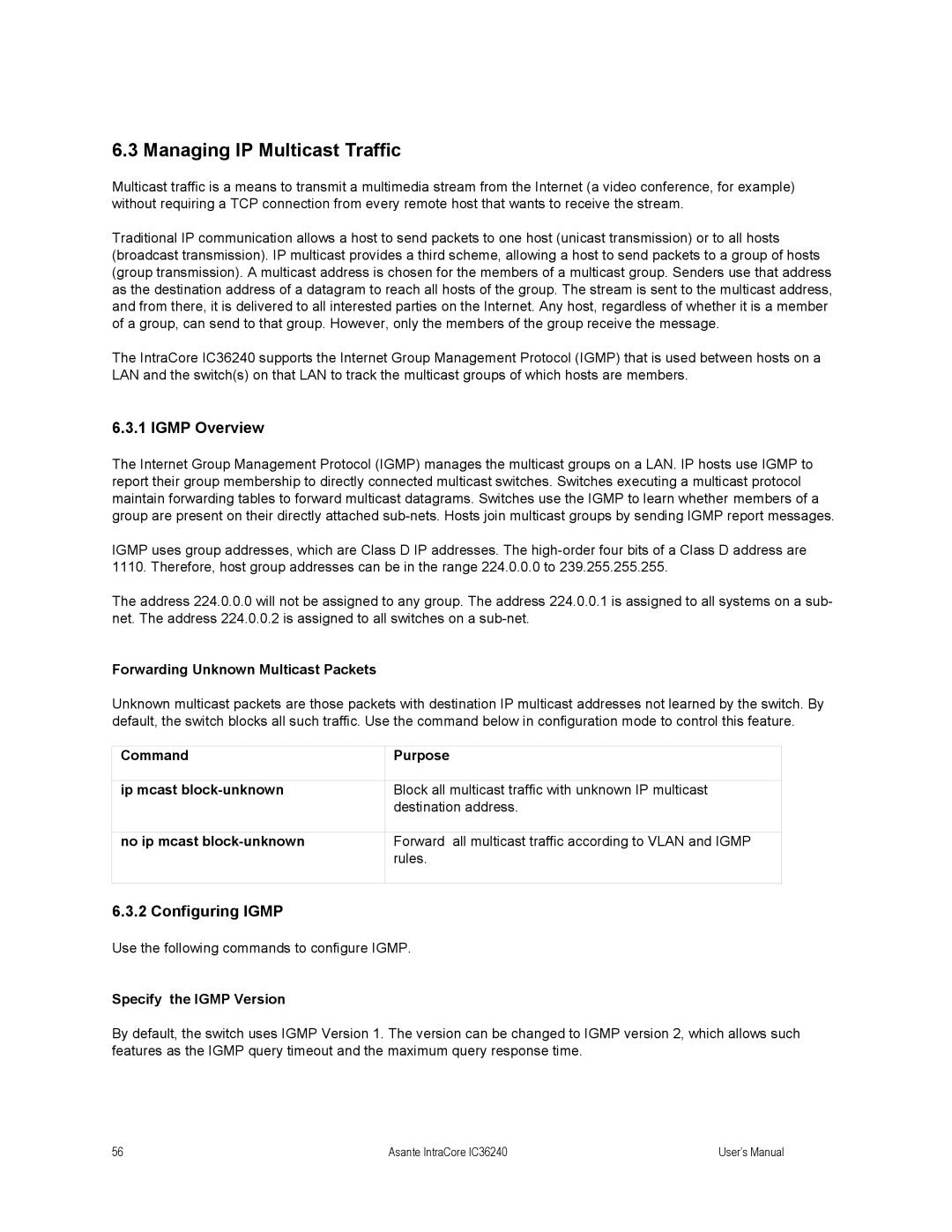6.3 Managing IP Multicast Traffic
Multicast traffic is a means to transmit a multimedia stream from the Internet (a video conference, for example) without requiring a TCP connection from every remote host that wants to receive the stream.
Traditional IP communication allows a host to send packets to one host (unicast transmission) or to all hosts (broadcast transmission). IP multicast provides a third scheme, allowing a host to send packets to a group of hosts (group transmission). A multicast address is chosen for the members of a multicast group. Senders use that address as the destination address of a datagram to reach all hosts of the group. The stream is sent to the multicast address, and from there, it is delivered to all interested parties on the Internet. Any host, regardless of whether it is a member of a group, can send to that group. However, only the members of the group receive the message.
The IntraCore IC36240 supports the Internet Group Management Protocol (IGMP) that is used between hosts on a LAN and the switch(s) on that LAN to track the multicast groups of which hosts are members.
6.3.1 IGMP Overview
The Internet Group Management Protocol (IGMP) manages the multicast groups on a LAN. IP hosts use IGMP to report their group membership to directly connected multicast switches. Switches executing a multicast protocol maintain forwarding tables to forward multicast datagrams. Switches use the IGMP to learn whether members of a group are present on their directly attached
IGMP uses group addresses, which are Class D IP addresses. The
The address 224.0.0.0 will not be assigned to any group. The address 224.0.0.1 is assigned to all systems on a sub- net. The address 224.0.0.2 is assigned to all switches on a
Forwarding Unknown Multicast Packets
Unknown multicast packets are those packets with destination IP multicast addresses not learned by the switch. By default, the switch blocks all such traffic. Use the command below in configuration mode to control this feature.
Command | Purpose |
|
|
ip mcast | Block all multicast traffic with unknown IP multicast |
| destination address. |
|
|
no ip mcast | Forward all multicast traffic according to VLAN and IGMP |
| rules. |
|
|
6.3.2 Configuring IGMP
Use the following commands to configure IGMP.
Specify the IGMP Version
By default, the switch uses IGMP Version 1. The version can be changed to IGMP version 2, which allows such features as the IGMP query timeout and the maximum query response time.
56 | Asante IntraCore IC36240 | User’s Manual |
